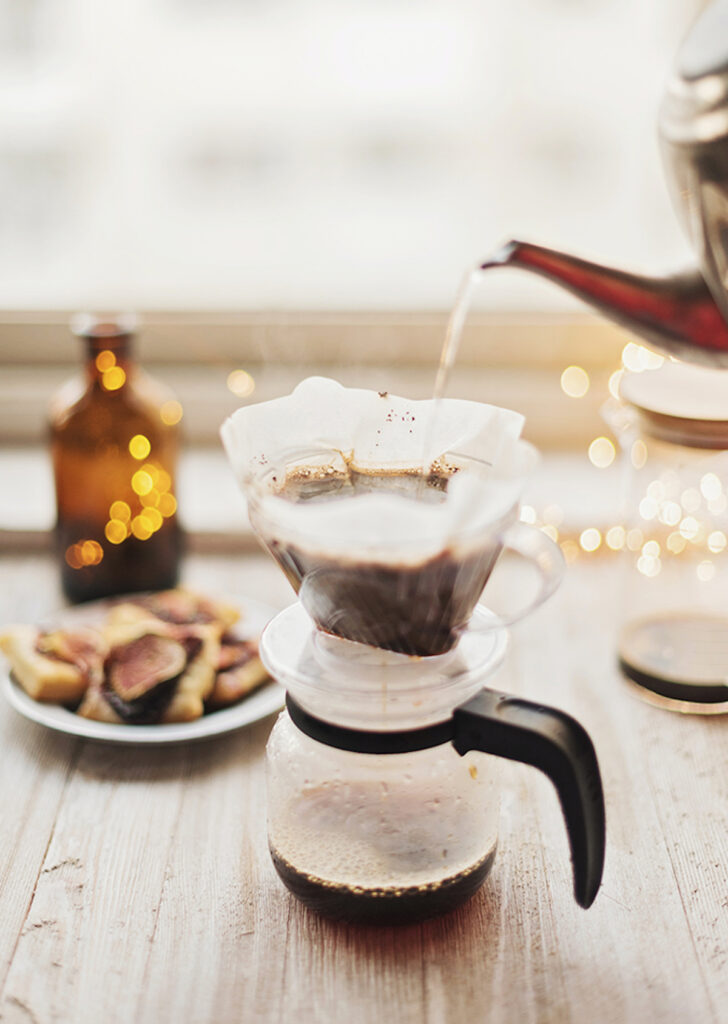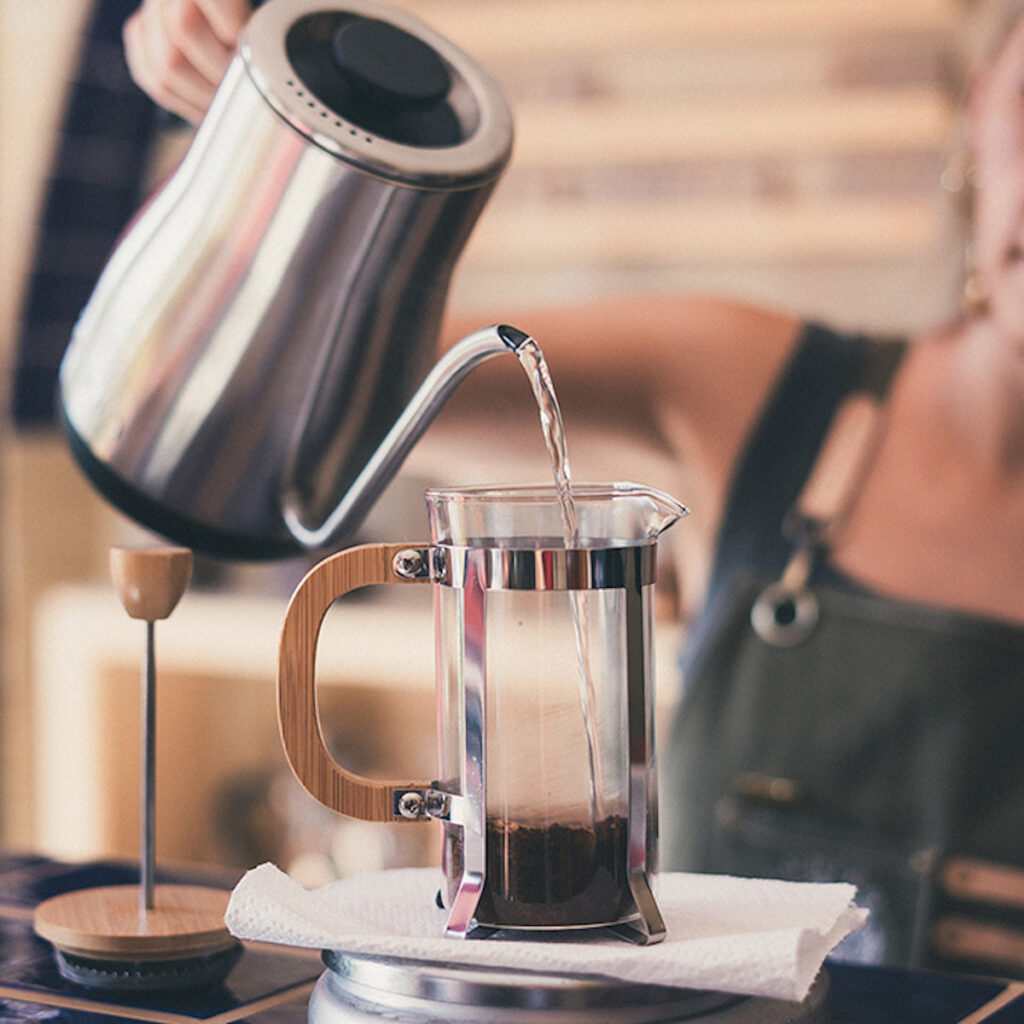If you are just getting started learning how to make your coffee right – finding the best water for making coffee, or trying to decide if you should buy pre-ground coffee or not, then the next logical step is figuring out your coffee grounds to water ratio. But how can you measure it, and does it make a big difference? Let’s find out!
More coffee doesn’t mean better coffee
More isn’t always better, and this includes coffee too. Most people would think that adding more coffee beans will make a “better” or stronger cup of coffee, but that’s simply now how coffee works. The type of coffee bean, its origin, the roasting, and the brewing method play a bigger role than the number of coffee beans. Instead, it comes down to the way that coffee and water interact with each other.

When the hot water dissolves the soluble compounds in coffee, we get the flavor and aroma – but there is only so much flavor and caffeine that can be extracted from each bean. If you over-extract your coffee will leave you with a bitter, dry, and flavorless cup of coffee. On the other hand, if you under-extract it, you will end up with a sour and salty coffee.
How much water should I add to my coffee brew?
We’ve covered coffee beans and why you shouldn’t just add more beans if you want a stronger cup.

For the tastiest coffee extraction, there is a “perfect” coffee to water ratio that never fails, especially if you’re still getting the hang of coffee brewing: 1:16 parts coffee to water. This can be grams or volume, but we recommend grams. So per 1 gram of coffee, add 16 grams of water; 22 grams of coffee to 352 grams of water, and so on.
Adding any more coffee than that is just wasting coffee since you can only extract so much caffeine before you over-extract flavors. Of course, there are other factors, like grind size, brew time, and water temperature, but the coffee to water ratio is probably the most important one.
What if I like stronger-than-normal coffee?
Making stronger coffee is possible, but it’s not achievable by adding more coffee beans to your mix. It actually is even easier than that. If you prefer a bolder and full-bodied cup, you need to get it by buying the right beans, which is dark-roasted coffee. However, if you prefer coffee with more caffeine, you need to buy light-roasted beans.

The trick is to stay loyal to the coffee to water ratio of 1:16, and focus on finding the right beans that work for you best. Of course, once you get the hang of this, you can feel free to experiment and see what YOU like best, but this ratio of 1:16 is “universally” acceptable for most folks.
Why measuring matters
Making a great cup of coffee every time is all about consistency. When you find a combination of coffee beans, roasting, and flavor that you like, all that’s left is following a recipe – your recipe.

One of the most important steps is to develop the habit of accurate measurement. We highly recommend getting a small kitchen scale, that will allow you to precisely measure water, beans, and coffee grounds. However, as an alternative option, you can measure by volume, it will just be less precise.
Instructions for brewing the perfect cup of coffee
Okay, maybe perfect isn’t the right word, as it varies from person to person, but we’ll tell you how to brew the universally acceptable cup of coffee.

You will need a kitchen scale, water, and your favorite brand of coffee.
- First, put your empty kettle on the scale, and hit the tare button (what this does is resetting the scale to zero so it will only measure what you add after to the kettle). Now, slowly add water to the kettle until it reaches 352g.
- Now it’s time to measure the beans. Reset your scale, and get a clean container to use for your coffee beans or grounds. Hit the tare button after placing the container on the scale. Then it’s time to add your coffee until you reach 16g – note that they can be either pre-ground or beans.
- It’s brew time! Now you have the perfect ratio of coffee to water, so it’s time to start brewing using your preferred brewing method.
And that’s it! You can experiment a bit but we don’t recommend going too much lower or higher than these numbers; if you add too many grounds, your coffee will feel muddy; and the opposite will make your coffee too watery.
We hope you’ve enjoyed this article and that your coffee journey goes swell! Don’t forget to share it with your other coffeeholic friends.
